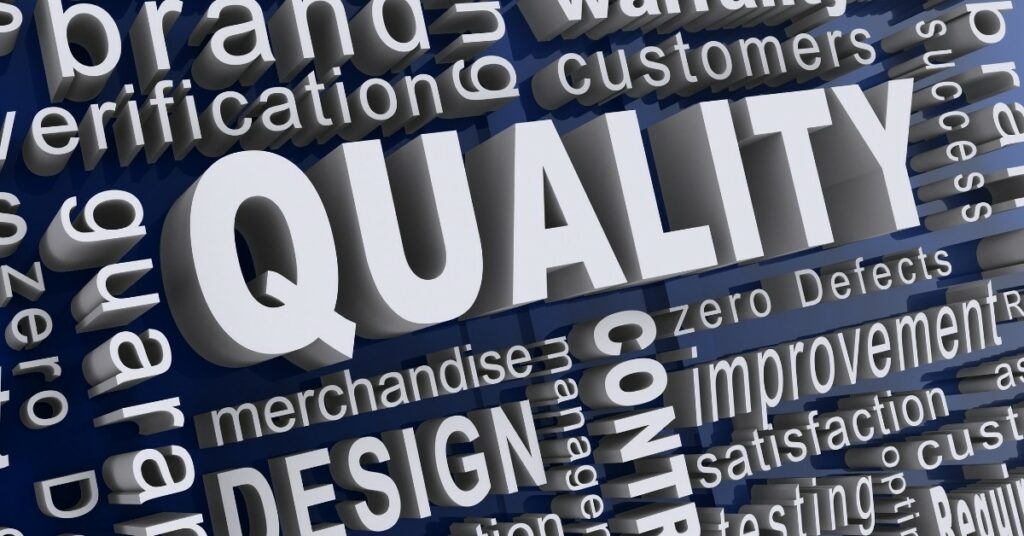How to choose a good subcontractor? Why is being a narrowly specialised expert no longer enough? Who should form their team? What has changed in the industry with COVID-19?
You have to rely on your intuition to make choices every day. In today’s advertising world, external stimuli, designed to convince and influence our subconscious, influence decision making like never before.

You don’t have to look far to find out about the power of these mechanisms – all you have to do is go to the nearest construction shop. Choosing the right product for the right job must be preceded by an analysis of quality, price and information collected about it. Otherwise, a quick, hasty decision usually ends badly. A broken drill is not a tragedy – after all, you can buy a new one. Cutting corners on the materials could end up being much worse – the least of which we can hope is contained to costly amendments. However, when the decision about choosing a product is left to a company whose work has a direct impact on our project and the months of hard work devoted to it, the cost and consequences of making a bad decision become incomparably greater.
So how do we select the right specialised subcontractor? As a designer and team manager, over the years I have gained the experience to tell you what distinguishes the best subcontractors from the mediocre ones. Read the following advice I have prepared to help you make the right decision.

1. Check if the subcontractor can manage their team.
Everyday life in the executive industry can be a nightmare and your subcontractor must be able to lead. Subcontractors with an engineering background are usually not prepared to lead and manage a team at all. The universities to which they owe their education have not equipped their future specialists with even basic experience in conducting a customer interview. Therefore, as long as he focuses on his work at his desk and does not stick his nose out of the studio, the working mechanism works perfectly.
The real problem will arise when such a person is promoted to the position of a team leader. Usually, the decision to promote is made behind his or her back – because the previous manager has become redundant, or the company has grown so much that there is a need to create such a position. Usually, an engineer who is drawn by the figures of the future salary has no resistance to accepting a raise and a new position. As a result, it quickly becomes apparent that he is completely unprepared. This is known as the Peter Principle and it can end up affecting your project.
Even the greatest experience in design does not equate to competence in managing a team. Yet the overwhelming majority of the employees in the industry lose out because of this misconception. Just as an excellent rally driver is naturally not going to be a master cyclist, a great engineer is not necessarily going to be a great manager with a machine.
Does your subcontractor have a properly selected, prepared and educated team? Ask him about the competence of the individuals in their respective positions. Ask for all positions – from assistants, through design, design and execution, to team leaders, managers, cost estimators and marketing department. If you feel that the person you’re talking to has no idea – don’t use his services.

2. What must subcontractors specialise in?
If you have already made sure that you are dealing with a subcontractor experienced in running a team, do not rest on your laurels. Now you need to find out which team you will work with. Anyone who has a little interest in football will start to see analogies here. The subcontracting team should be made up of specialists from different industries, complementing each other in mastered skills. It is only when you have control over all these areas and an understanding of their specific problems that you can talk about the promising work of the captain of the subcontracting team.
Each installation subcontracting team must include a person responsible for HVAC, heating, ventilation, air conditioning, drinking and treated water, hot and cold water, district heating, high-power electricity, low-current installations, automation (BMS), lighting, fire-fighting installations – including hydrants – sprinkler systems, escape routes, smoke extraction, aeration zones, air transfers and refill.
Try to find all these specialities with your contractor. Otherwise the subcontractor will use your ignorance for the simple reason that it will save you money but in the end you will lose out on the quality of the whole project.

3. What does the subcontractor have to show you before you decide to collaborate?
Architects are not the only ones who save their work as a portfolio. The sub-contractor engineer should also have a catalogue of his work with relevant plans, 3D designs and photographs from the construction site. No less important is the inclusion in such a portfolio of references from architects with whom the specialist has worked before.
Choose a subcontractor whose portfolio reflects the experience of working in facilities with completely different applications, such as wastewater treatment plants, universities, high-rise buildings, subways, public buildings. The work presented by your specialist must reflect his creativity and willingness to adapt his skills to the needs of the building.

4. What must the examples of projects submitted by a subcontractor reflect?
At all costs, avoid selecting a subcontractor only on the basis of well-designed projects. Make sure that they have been completed. If you notice any gaps in the documentation for a particular stage of construction, ask for an explanation. It is possible that there have been some unforeseen circumstances at the construction site that have prevented the project from being completed. However, it is not outside the realm of possibility that the project has been completed, but not well enough to boast about it. Has the subcontractor learnt from this? Did they make sure that such mistakes do not occur again?
A designer in the industry who made mistakes, but learned from them, boldly says so. He will most probably be the one who will not repeat them, because he has rectified them and drawn conclusions. In the future, he will protect not only his scope, but also the whole undertaking from mistakes. These are the kind of people you are looking for.
A designer in the industry who made mistakes, but learned from them, boldly says so. He will most probably be the one who will not repeat them, because he has rectified them and drawn conclusions. In the future, he will protect not only his scope, but also the whole undertaking from mistakes. These are the kind of people you are looking for.

5. What actions by the subcontractor in times of pandemic will lead to an increase in the quality of cooperation?
The situation with COVID-19 has put engineers under particular pressure. With the ability to work from home, it would appear that apparently nothing has changed at work as it is possible to safely carry out projects without leaving home. The real challenge, however, turns out to be how to maintain reliability in communication, on the same level as when work was done together in the office.
Research shows that many companies where work is done on computers, such as giants like Twitter, have not seen their employees’ productivity drop with the advent of the pandemic. However, the IT industry differs from the construction industry in terms of the responsibilities of employees. Your specialist must not only be able to design efficiently but must also be able to appear on-site if necessary. Check his willingness to travel – is he able to visit a construction site outside the country? If the specialist confirms, you can be assured that he will probably be even more ready to travel around Poland.
Research shows that many companies where work is done on computers, such as giants like Twitter, have not seen their employees’ productivity drop with the advent of the pandemic. However, the IT industry differs from the construction industry in terms of the responsibilities of employees. Your specialist must not only be able to design efficiently but must also be able to appear on-site if necessary. Check his willingness to travel – is he able to visit a construction site outside the country? If the specialist confirms, you can be assured that he will probably be even more ready to travel around Poland.

In this new reality, the specialist must take care of his availability in both the virtual and real world. One of the proven ways of maintaining excellent communication in the times of COVID-19 is our Spiral Communication Model. Contact us and ask how the smooth and correct work on the order, construction supervision, as well as communication with the investor and executive teams proceeds.
In this new reality, the specialist must take care of his availability in both the virtual and real world. One of the proven ways of maintaining excellent communication in the times of COVID-19 is our Spiral Communication Model. Contact us and ask how the smooth and correct work on the order, construction supervision, as well as communication with the investor and executive teams proceeds.


